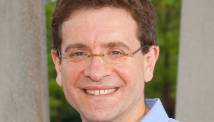2012: The year in pictures
2012: The year in pictures
2012: The year in pictures
2012: The year in pictures
2012: The year in pictures
2012: The year in pictures
2012: The year in pictures
2012: The year in pictures
2012: The year in pictures
2012: The year in pictures
2012: The year in pictures
2012: The year in pictures
2012: The year in pictures
2012: The year in pictures
2012: The year in pictures
2012: The year in pictures
2012: The year in pictures
2012: The year in pictures
2012: The year in pictures
2012: The year in pictures
2012: The year in pictures
2012: The year in pictures
2012: The year in pictures
2012: The year in pictures
2012: The year in pictures
2012: The year in pictures
2012: The year in pictures
2012: The year in pictures
2012: The year in pictures
2012: The year in pictures
2012: The year in pictures
2012: The year in pictures
2012: The year in pictures
2012: The year in pictures
2012: The year in pictures
2012: The year in pictures
2012: The year in pictures
2012: The year in pictures
2012: The year in pictures
2012: The year in pictures
2012: The year in pictures
2012: The year in pictures
2012: The year in pictures
2012: The year in pictures
2012: The year in pictures
2012: The year in pictures
2012: The year in pictures
2012: The year in pictures
2012: The year in pictures
2012: The year in pictures
2012: The year in pictures
2012: The year in pictures
2012: The year in pictures
2012: The year in pictures
2012: The year in pictures
2012: The year in pictures
2012: The year in pictures
2012: The year in pictures
2012: The year in pictures
2012: The year in pictures
2012: The year in pictures
2012: The year in pictures
2012: The year in pictures
2012: The year in pictures
2012: The year in pictures
2012: The year in pictures
2012: The year in pictures
2012: The year in pictures
2012: The year in pictures
2012: The year in pictures
2012: The year in pictures
2012: The year in pictures
2012: The year in pictures
 iPhone, iPad and Mac are trademarks of Apple Inc., registered in the U.S. and other countries. App Store is a service mark of Apple Inc.
iPhone, iPad and Mac are trademarks of Apple Inc., registered in the U.S. and other countries. App Store is a service mark of Apple Inc.










